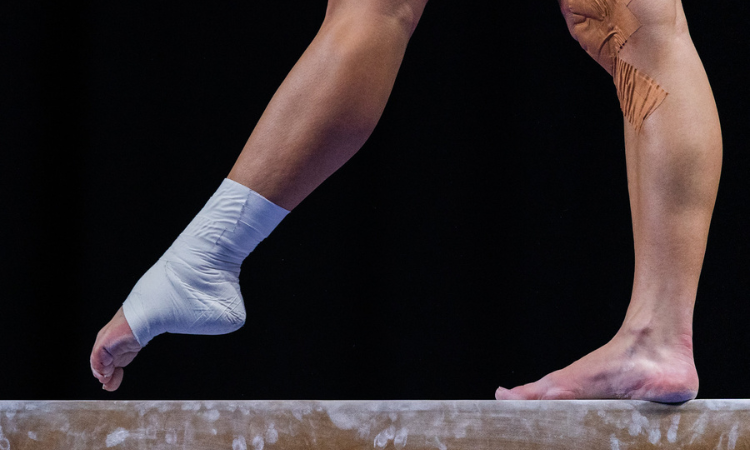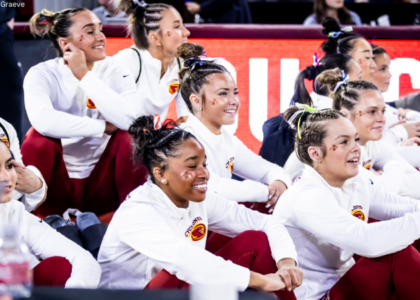Unfortunately, season-ending injuries are a major part of college gymnastics. The most common tend to be Achilles and ACL tears, but there are certainly other injuries that can cause an athlete to lose a significant amount of competition time. Odds are, you’ve seen at least one of your favorites sustain a scary injury on the competition floor and might be wondering, how might this effect the rest of their career? Will they have the same scoring potential once they return? Will they return to competition at all? Let’s see what the data says!
Firstly, I compiled a list of all the season-ending injuries since the start of the CGN Injury Updates page in 2017. I then determined the general career outcome for each athlete, such as medical retirement, return to competition, etc. Since this analysis is comparing pre-injury performance to post-injury performance, all athletes who entered college already injured or who were injured prior to competeing an event at least four times were not included.
Of the 251 athletes that were included in this analysis, 124 athletes (~49.4%) went on to recover and return to competition, while the remaining 127 athletes (~50.6%) either medically retired, graduated before returning to competition, or left their respective teams for undisclosed reasons. If your favorite athlete recently suffered a season-ending injury, there seems to be a roughly 50-50 chance that you’ll see them back on the competition floor before the end of their career.
Using the 124 athletes that returned to competition, I looked at the difference between the total number of events competed pre- and post-injury.
There was no change in the number of events competed for 53 athletes (~43.5%), while 21 athletes (~16.9%) added at least one event and 49 athletes (~39.5%) lost at least one event following their return from injury.
I also looked at the total number of routines competed by these athletes on each event pre- and post-injury to determine if there was a specific event that a gymnast was more or less likely to compete following their return to competition.
All events saw a drop in number of routines, but as one might expect, bars and beam saw the smallest decrease in routines while vault, and especially floor, saw significant decreases in number of routines. Considering the majority of season-ending injuries tend to be Achilles- or ACL-related, it makes sense that the leg events would see the greatest decline or would take considerably more time to add back.
For the next phase of this analysis, I calculated pre-injury averages on each event by averaging the top three of the last four scores prior to injury so that possible incomplete routines due to injury would not skew the data. I then calculated a post-injury average on each event by averaging the top three of the first four scores following return to competition. I then averaged these values across the entire data set to get the overall averages and found the difference. In some cases, an event was competed post-injury but not pre-injury or vise versa. These values were not included for this portion, as they would heavily skew the data, and change in number of events competed was discussed above.
There was a small decrease in overall average score on bars and a similarly small increase in average score on beam and floor. These changes are largely insignificant as they are smaller than the quarter-tenth scoring increments that we see in college gymnastics. Vault, however, showed a fairly significant decrease in score at almost a full tenth. So, should your favorite gymnast return on all of their previous events, you can likely expect them to score relatively the same, with the exception of vault, which may just take a bit more time to perfect or could potentially be explained by downgrading from a 10.0 start value to a 9.95. This could be very useful data to have if you like to draft injury returners for your fantasy gymnastics team.
Only initial season-ending injuries were taken into account for this analysis, but in case you were looking for some bonus data, of the 124 athletes that went on to return to competition, six actually ended up sustaining a second season-ending injury during their careers. Out of those six, half went on to return to competition and half graduated before they were able to recover.
As always, there are caveats to this analysis. Gymnastics is not generally known for being a transparent sport when it comes to injuries. Some teams and athletes are more likely to disclose the nature of an injury while others tend to draw a bit more speculation, therefore this data may not be fully accurate or complete, but it is the best of what is available and is still useful for big-picture analysis.
There’s also a multitude of reasons why a gymnast may not compete again following a season-ending injury that are not related to the actual injury itself. These could include not making lineups due to increased depth, getting injured too late in the season to receive a redshirt year, or attending a school that is not as accommodating to fifth or sixth year athletes. In reality, the amount of gymnasts that recover from serious injury may be far greater than the roughly 50% noted above, but as outsiders, none of us can make that determination.
READ THIS NEXT: 2023 Nastia Liukin Cup Qualifiers Behind the Numbers
Article by Mariah Dawson
Like what you see? Consider donating to support our efforts throughout the year!




3 comments